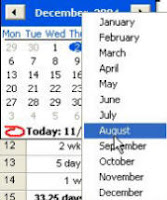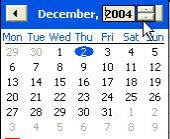What Type of Cell Phone User Are You?
By Nancy Friedman
It's common knowledge that fellow cell phone users can be pretty annoying. It seems as though most people have a pet peeve or two about them. In our travels, we have found that there are a variety of “Cell Phone Personalities.” Read on and see which one applies to you.
1. The Head Turner: The head turner looks as though his head is on a spindle of some sort. As he talks, he is constantly looking around. We're not sure what he's looking for, but we think he wants to see how many people are watching him as he's talking on his phone. "Hey look!! I have a cell phone. I'm unique." It's as though he doesn't realize most everyone has a phone now and no one is interested in his. Trying to be a big shot is making him a sad spectacle.
2. The Shouter: This poor soul thinks everyone is hearing challenged. His voice projects three times the normal amount needed. It's obvious he isn't able to hear how loud he is. And the shouter doesn't seem to realize that his phone already amplifies his voice, so he really doesn't need to shout at all.
3. The Secret Talker: The good news is he talks quietly, but he covers his mouth over the receiver and it looks as though he's delivering information for the CIA, while his eyes dart around from side to side.
4. The Corporate Cliché Meister: This person uses buzzwords & clichés to impress those around him. "Well, just tell Bill to keep me in the loop. We need to run this concept up the flag pole to see if anyone salutes it. When we go live, the entire project represents a real paradigm shift into the B2B space. I mean this would really connect the dots and help us build synergies for all of our stakeholders. I just hope we don't get any pushback."
5. The Useless Call Maker: This user is a phone freak. He's hardly ever off the cell phone. He's making useless calls...one after the other. You can normally find the useless call cell phone user on an airplane making astute comments such as, "Hi, we haven't left yet. Ok, Bye." Or "Hi, we just landed. Ok, see you." Not sure why these useless calls couldn't wait till he was off the plane.
6. The Crazy Talker: Well...it looks like he's crazy. This is the hands free user. You see and hear him walking and talking loudly, head bobbing up and down, but there's no one around. So naturally you either think he's talking to you (uninvited) or you think he's talking to himself. Either way...crazy. Too bad people can't see how they appear to others. Use those things in the car, on the side of the road, for hands free operation; not in public.
7. The I Don't CARE Where I Am or Who You Are...I Have a Phone Call to Make or Take: This cell phone user makes and takes any and all calls anywhere he pleases declaring, "This land is MY land." My rights count, yours don't. Funeral? Restaurant? At a play or recital? As it rings, he quickly (and insincerely) says, "Sorry about that."
8. The Stalker: This type of cell phone user has all his speed dial numbers directed only to YOU. He calls you a lot just to talk. Problem is...he has the time...you don't. And you don't know how to tell him not to call so much without hurting his feelings. Hmmm, how do I get an unlisted cell phone number?
9. The My Ringtone is Better Than Your Ringtone: Download heaven here. This user has gone to great lengths to get a ringtone that is unique. And with this, they let it ring longer than normal, just so you can hear this special ditty!
10. The Generic Cell Phone Ringers: One phone rings...10 people in the area check their cell phones to see if it's their phone. (Is that mine?)
11. The Cell Phone Driver: Pick one...not both. Drive or talk. You can't do two things well at the same time. How scary to look in the rear view mirror and see a delivery truck tailgating you, with the distracted driver on a cell phone.
12. Right Hand/Left Ear: Just REALLY looks uncomfortable (and odd).
13. The Considerate Cell Phone User: This RARE person has a high regard for others and their personal space. When he makes or takes a phone call, he removes himself from the table or whatever area he's in and takes or makes the call in a private area so as not to disturb anyone.
Nancy Friedman is president of Telephone Doctor®, an international customer service training company headquartered in St. Louis, Missouri, specializing in customer service and telephone skills. She is a KEYNOTE speaker at association conferences and corporate gatherings and is the author of four best selling books. Call 314-291-1012 for more information or visit the Web site at www.telephonedoctor.com.Published in Networking Today, July 2005.





